Abstract
Interviews with seven of ten known survivors of jumps from the Golden Gate and San Francisco-Oakland Bay bridges showed a unique association between the Golden Gate Bridge and suicide. The study went beyond exploring the nature of suicidal jumps and shed new light on the experience of nearly dying. All the survivors described this experience as tranquil and peaceful. None of them experienced life events or distant memories passing through their minds or before their eyes. However, all of them experienced transcendence and spiritual rebirth phenomena. Suggestions for preventing suicides from the Golden Gate Bridge are discussed, including the construction of a suicide barrier.
Full text
PDF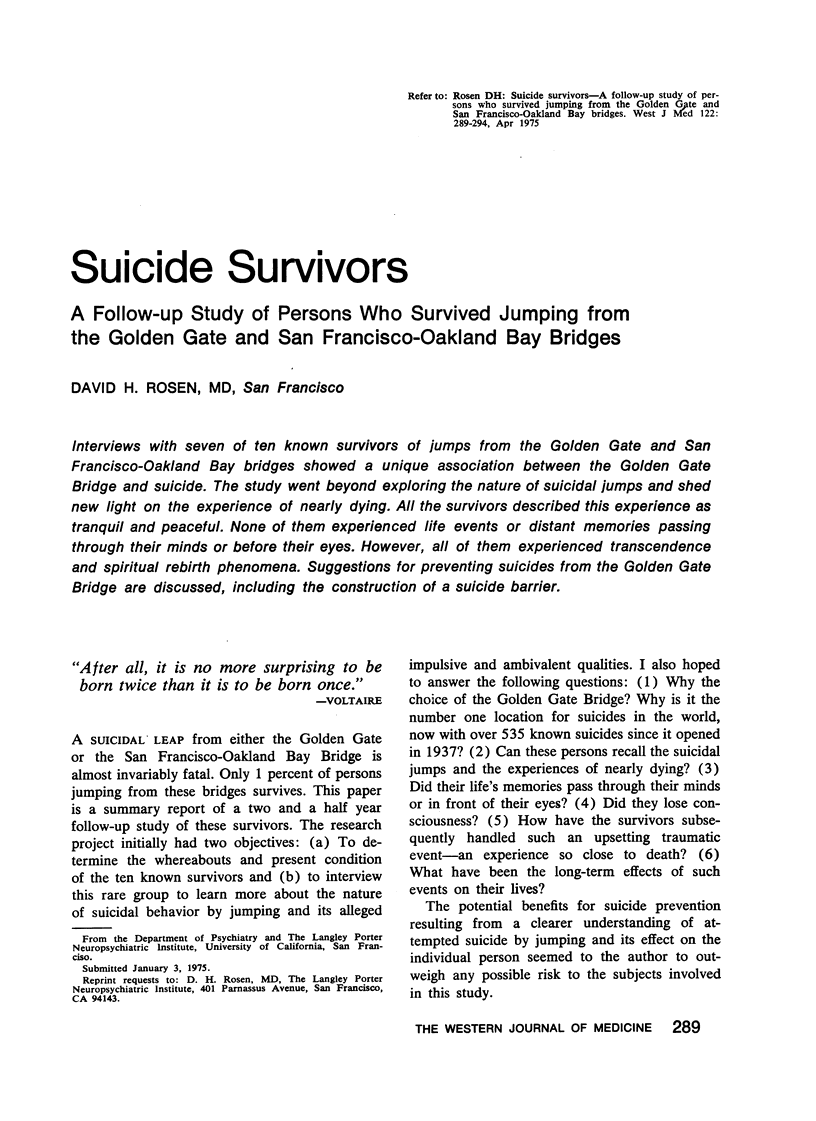
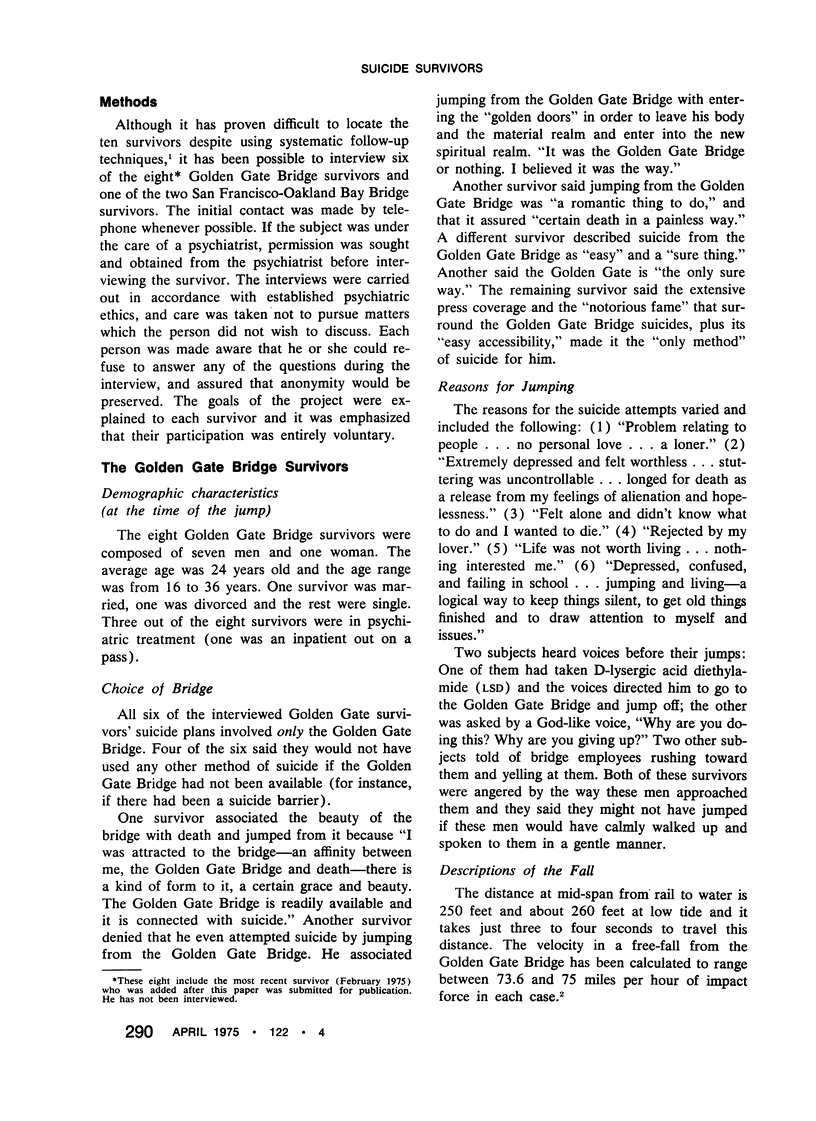
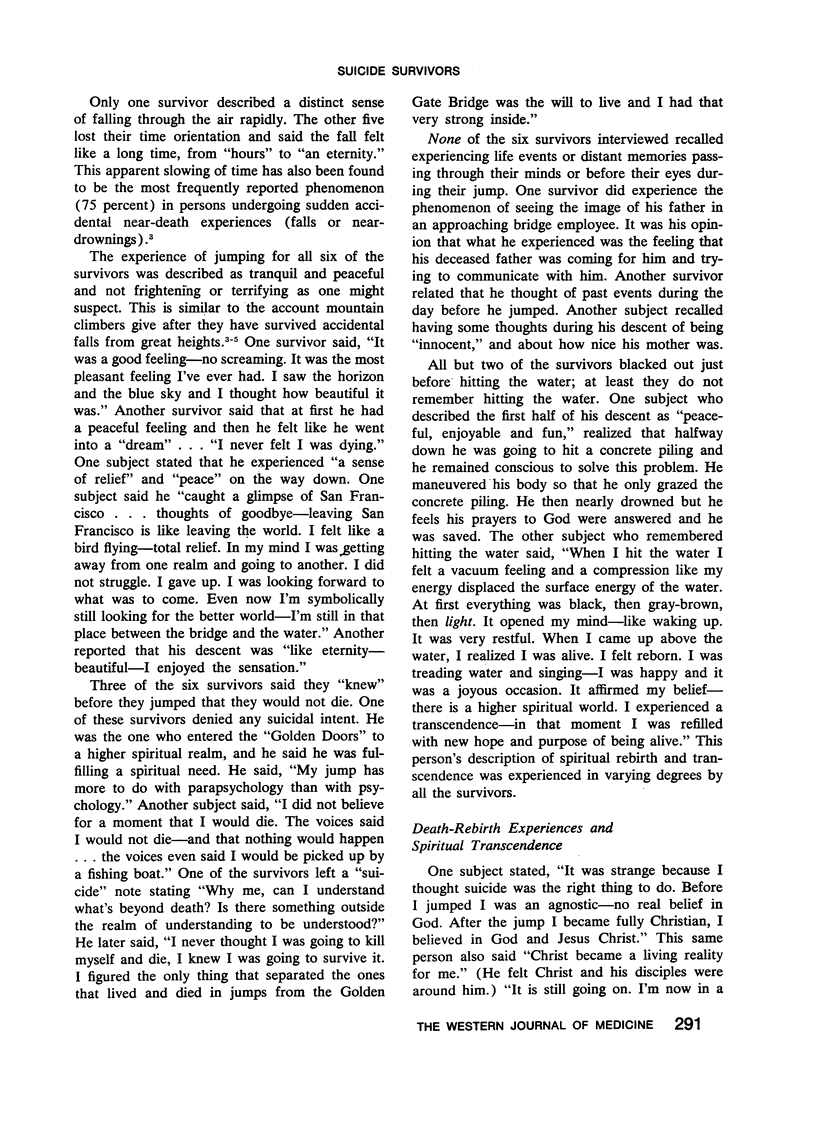
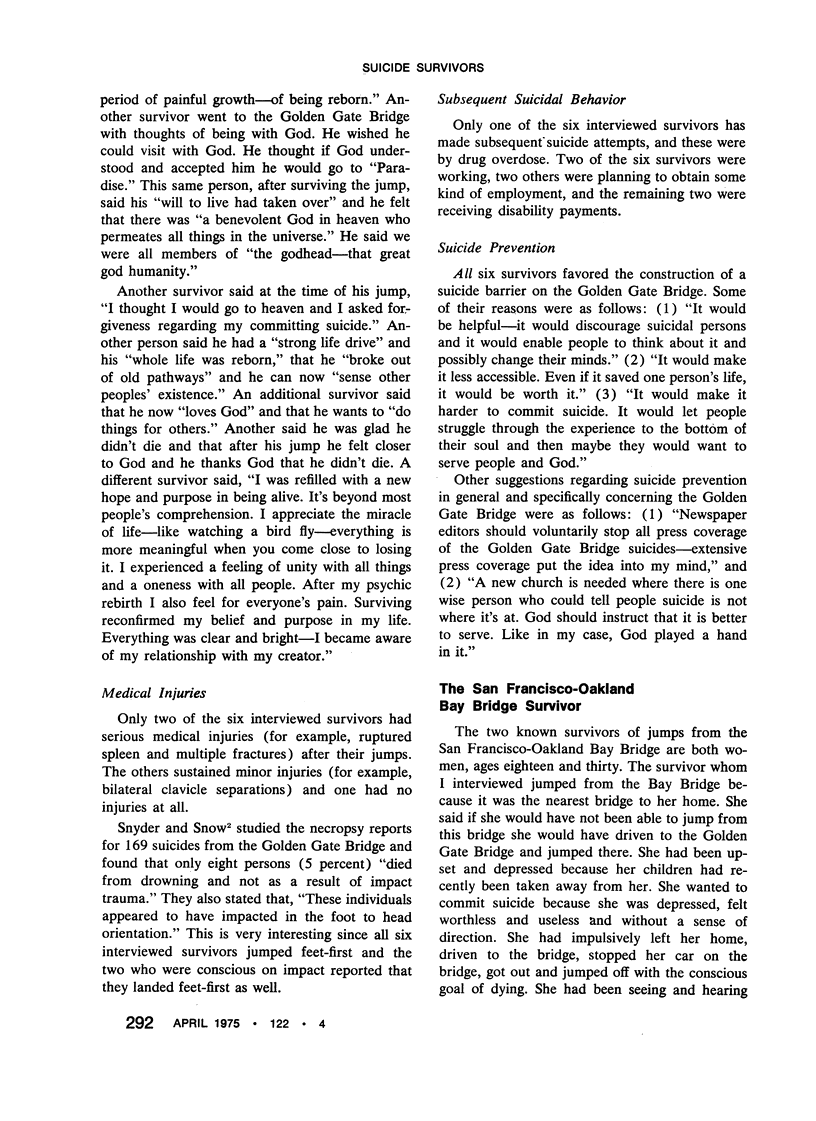
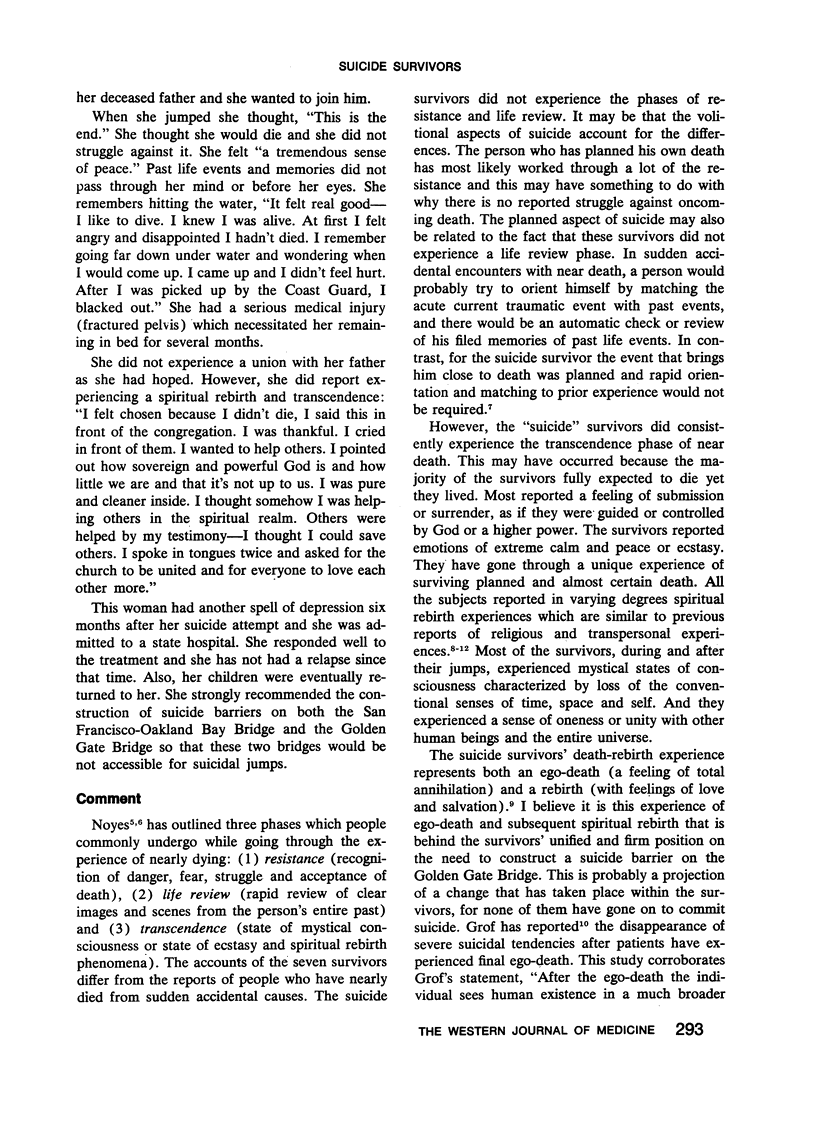
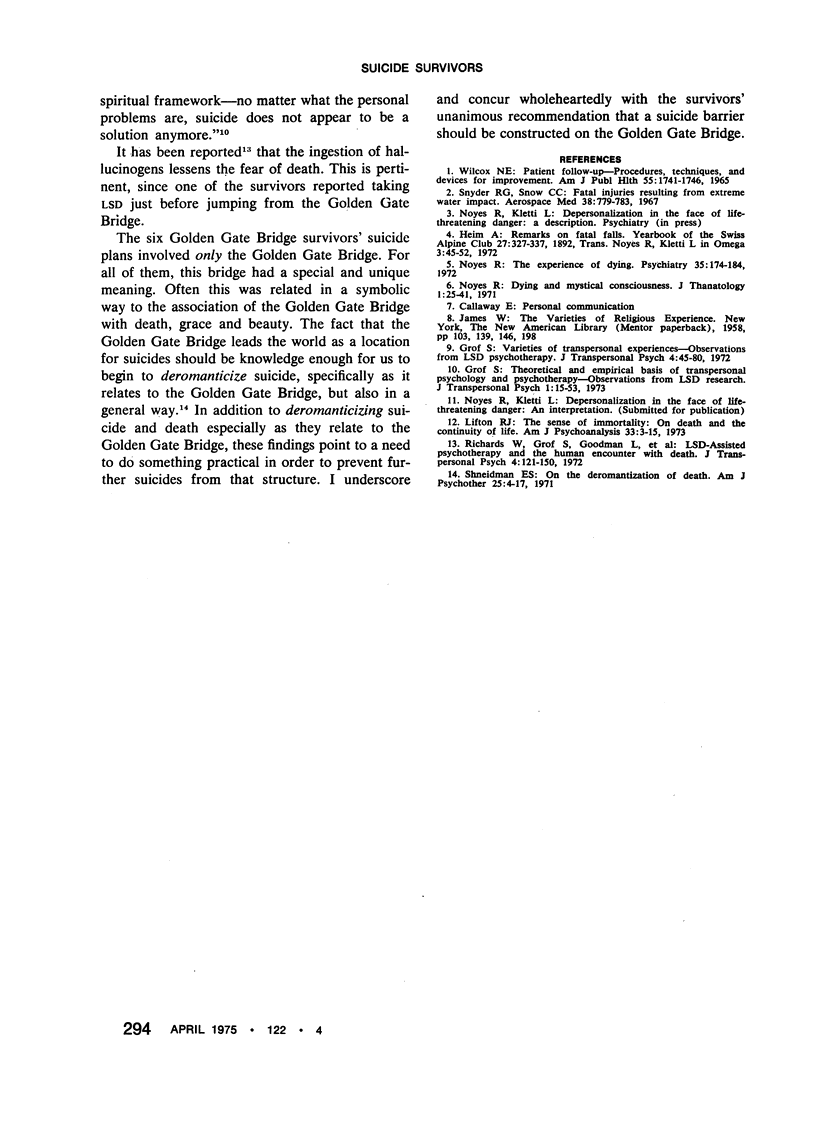
Selected References
These references are in PubMed. This may not be the complete list of references from this article.
- Noyes R., Jr The experience of dying. Psychiatry. 1972 May;35(2):174–184. doi: 10.1080/00332747.1972.11023710. [DOI] [PubMed] [Google Scholar]
- Shneidman E. S. The role of psychotherapy in the treatment of suicidal persons. On the deromanticization of death. Am J Psychother. 1971 Jan;25(1):4–17. doi: 10.1176/appi.psychotherapy.1971.25.1.4. [DOI] [PubMed] [Google Scholar]
- Snyder R. G., Snow C. C. Fatal injuries resulting from extreme water impact. Aerosp Med. 1967 Aug;38(8):779–783. [PubMed] [Google Scholar]
- Wilcox N. E. Patient follow-up: procedures, technics, and devices for improvement. Am J Public Health Nations Health. 1965 Nov;55(11):1741–1756. doi: 10.2105/ajph.55.11.1741. [DOI] [PMC free article] [PubMed] [Google Scholar]


